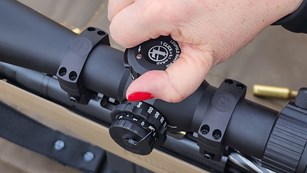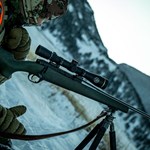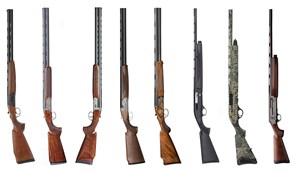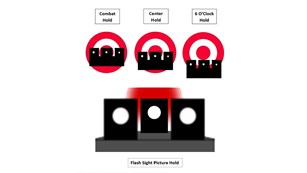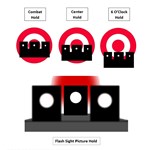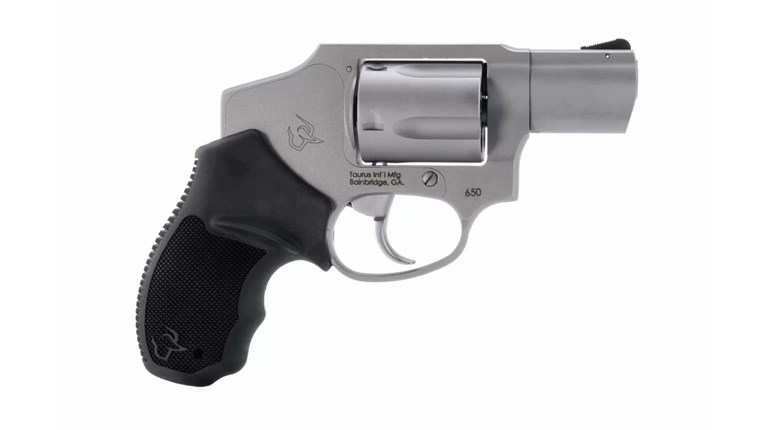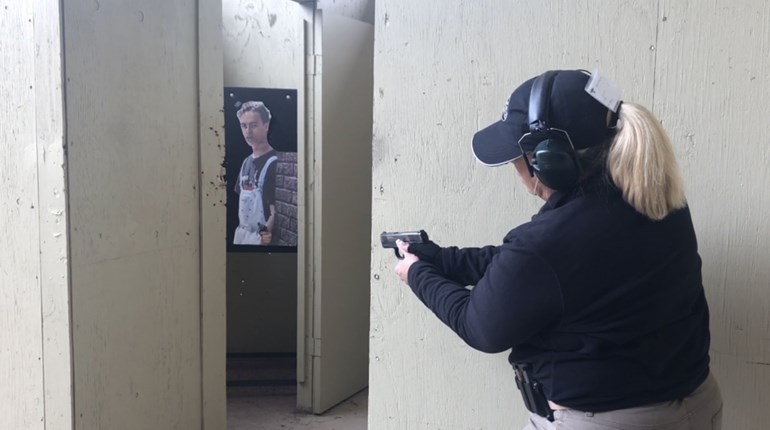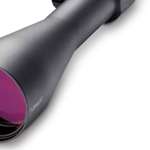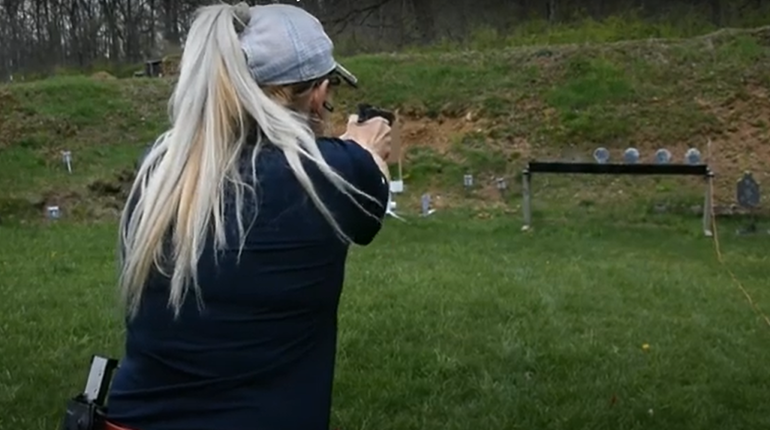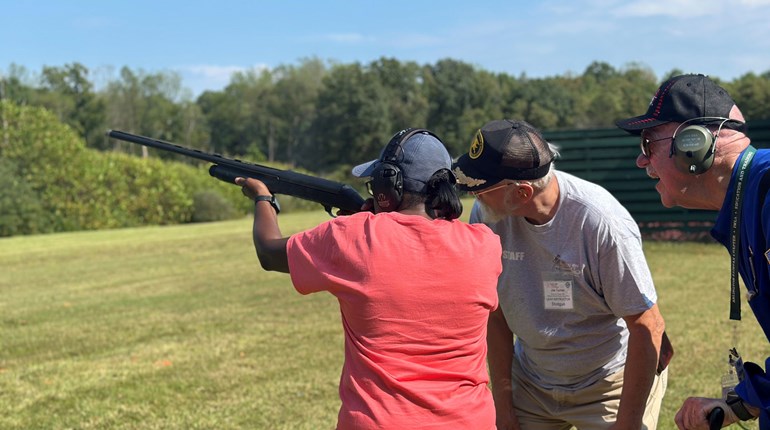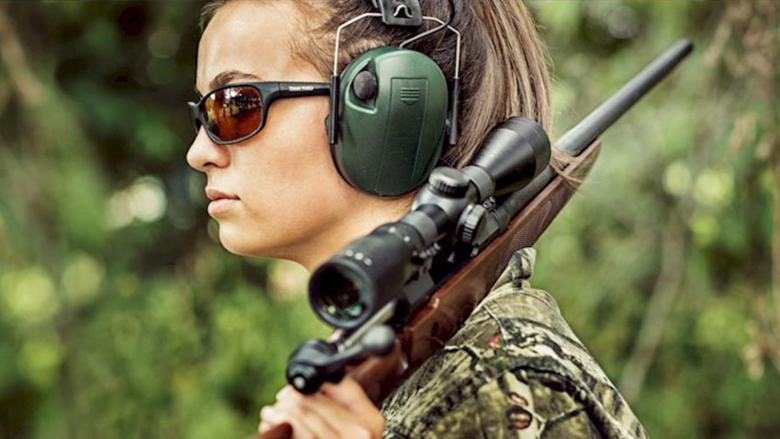
Walther's famous all-steel Polizei Pistole (PP) series was first launched in 1929. It was a cutting-edge design for its time sporting a footprint and features still favored for self defense pistols today, including a de-cocker and loaded chamber indicator. The original full-sized PP models, with 3.9" barrels, were intended for use as an on-duty sidearm for military and police. But over time, they were phased out of production in favor of the smaller versions.

The Walther Arms PP pistol arrives in a velvet-lined case.
Perhaps the most popular variation of this platform has been the Walther PPK, which started shipping in 1931. Mechanically speaking, the PPK (Polizei Pistole Kriminalmodell) is the same gun as the PP but with shorter 3.3" barrel and a reduced length grip frame. The smaller footprint makes this version easier to carry concealed. It became an indelible pop culture icon when a blued model chambered in .32 ACP was issued to super spy James Bond in the 1962 movie version of Ian Fleming's novel “Dr. No.”
The third variation, called the PPK/S, was developed in response to American regulations. The Gun Control Act of 1968 restricted the importation of handguns lacking prescribed “sporting features.” This legislation included an “importation test,” or a point system for certain features including length and height. As it turned out, the PPK failed the test by one point. To pass these requirements, Walther developed the PPK/S. It sports the shorter PPK slide paired with slightly longer original PP grip frame that accommodates a 7-round .380 ACP PP magazines instead of the shorter 6 round PPK magazines. Oddly enough, in this case, a pistol that holds more ammunition in the magazine (not less) was required to pass federal importation restrictions.

The controls include a checkered magazine release button and the slide mounted safety lever/de-cocker.
In 2024, Walther chose to revive the furloughed PP models and bring them back to the American marketplace. Rather than wrestle with importation restrictions, this German maker (Carl Walther GmbH) has established a U.S.-based subsidiary, dubbed Walther Arms, with manufacturing and distribution facilities located in Fort Smith, Arkansas. As of this writing, the PP is available in blued or stainless finishes, with or without threaded barrels, chambered in .32 ACP or .380 ACP. This evaluation takes a closer look at the stainless .380 ACP version.

The loaded-chamber indicator pin is located below the rear sight.
The Walther PP is a blowback-operated semi-automatic pistol. This means that the only mechanism holding the slide closed between shots is a singular round-wire recoil spring. This spring is supported by the fixed barrel, which in turn is mounted directly to the frame. This old-school action configuration is simple, rugged and reliable. But most modern pistols employ locked-breach actions since they tend to generate less felt recoil and the slides can be easier to cycle manually.
The PP model used in this evaluation features an all-stainless-steel construction and a flush-fit, un-threaded barrel. The slide exhibits the classic profile of this series with the slide and the frame both sporting matte-finish rounds and polished flats. The rear cocking serrations are canted and the spring-loaded cartridge extractor is mounted behind the right-side ejection port.

This version features an all-stainless-steel construction
The top of the slide features a set of small, low-profile fixed sights. The topstrap is grooved with wavy lines in between the sights to reduce glare. The red-dot blade front sight is paired with a rear sight that has a red dot at the base of its square-notch. Just below the rear sight is the loaded chamber indicator pin, which protrudes from the slide when there is a round in the pistol's chamber.
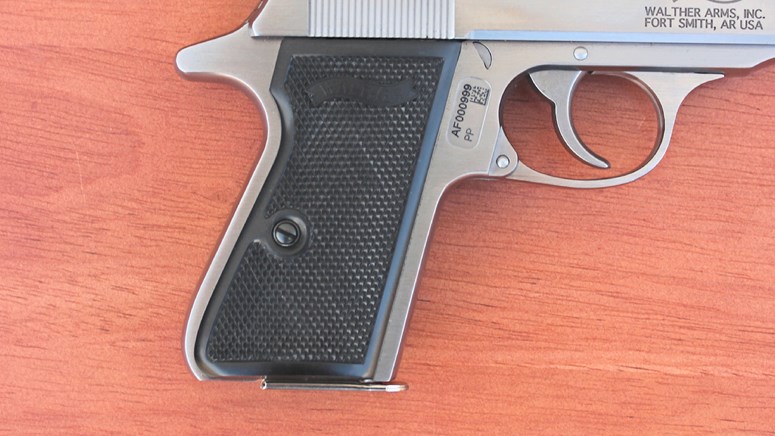
The black polymer grips are textured for improved purchase.
On the left side of the slide, just in front of the exposed hammer, is the combination thumb safety and hammer de-cocker. This lever swings up, exposing a red dot on the frame, into the FIRE position. When the lever is pressed down, into the SAFE position, the rounded hammer automatically drops forward without firing a chambered round.
The PP is a double-action/single-action pistol (DA/SA) designed to be carried with the safety lever engaged and the hammer forward. This means the first shot is fired using the double-action trigger which has a notably longer and heavier trigger pull. The DA trigger for this model can weigh in somewhere between 12 lbs. to 17 lbs. In this case, the DA trigger was heavier than the range of the Lyman Products digital trigger gauge I used to measure it, which maxes out at 12 lbs. With the hammer cocked for single-action fire, the trigger pull weight dropped to 3 lbs. 5 oz. with a light take-up and a crisp break.
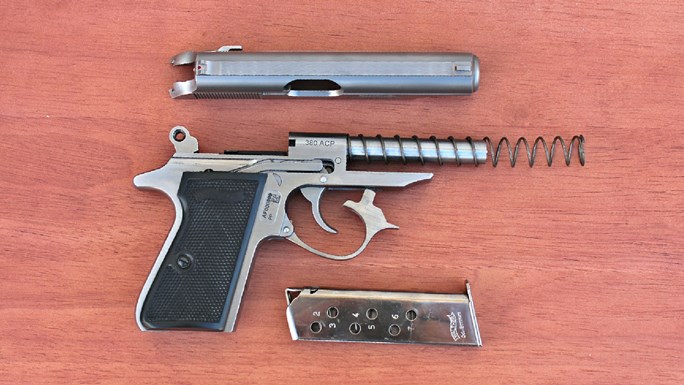
The fixed barrel doubles as the guide rod for the recoil spring.
The fixed 3.9" barrel's bore is rifled at a 1:10" rifling twist rate and the feed ramp is properly polished for more reliable operation. The frame's external controls include the trigger guard, which also serves as this pistol's takedown lever, and the left-side checkered, round-button magazine release. The grip frame's front and back straps are smooth and untextured. At the top of the backstrap is a beaver tail extension which effectively protects the shooter's hand from hammer bite. The sides of the grip are fitted with diamond-checkered polymer grip panels. This pistol arrives with two 7-round magazines. One has a flush-fit steel base plate while the other is capped off with an extended polymer finger rest.

This pistol arrives with two 7-round magazines.
Weighing in at 24.3 oz., unloaded, the PP was impressive right out of its velvet-lined storage case. The fit and finish throughout were top tier. The side to frame fit was smooth, clean and impressively tight. There were no visible machine marks inside or out. The controls were crisp and precise in their operations. Even the magazines received an extra bit of polishing at the factory.

The model PP operated reliably with all ammunition tested.
At the shooting range, the PP was put through its paces using the two provided 7-round magazines. The ammunition set included full-metal-jacket round nose and modern defensive hollow-point loads. The pistol, magazines and ammunition all operated properly. There were no malfunctions throughout the course of testing. This pistol's weight and longer slide worked to balance out the blow-back action for moderate and manageable levels of felt recoil.

Test loads included practice and premium grade loads.
The formal benchrested performance testing consisted of five 5-shot groups fired into paper targets posted at a distance of 15 yards using three different loads of ammunition. DoubleTap Ammunition's Match 100-gr. full-metal jacket load is intended for practice and target shooting. The two up-to-date hollowpoint loads included Barnes Bullets' TAC-XPD 80-gr. All-copper hollow point and Hornady's American Gunner 90-gr. XTP (eXtreme Terminal Performance) loads. A Garmin Xero C1 Pro chronograph was used to measure bullet velocity averages for 10-shot strings. Here are the results:
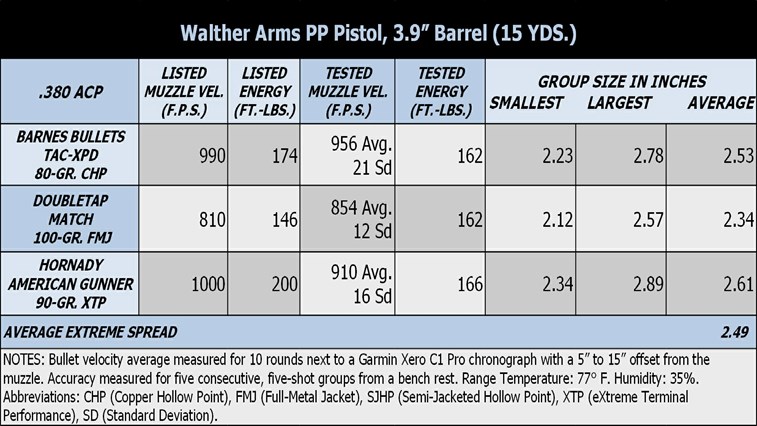
Some folks are going to reach the end of this evaluation and ask what I think about using the Walther PP series pistols for personal protection. By modern polymer-framed, striker-fired compact pistol standards, the PPs have some drawbacks. The steel frames make them relatively heavy, the magazines provide single-stack ammunition capacities, and they have a higher price tag than most polymer-framed models. And the heavy double-action trigger for first shots fired takes practice to master.
But to be clear, I would not fault anyone for choosing one of these handsome, all-steel pistols for self-defense. The pistols I've worked with, chambered in .22 LR, .32 ACP and .380 ACP, have been well-made and reliable. What sets the Walther PP apart from the .380 ACP pistol crowd is its sleek lines, pop culture appeal and a track record stretching back nearly a century. This American-made version would great addition to an enthusiast's gun collection. For more information, visit waltherarms.com

UPDATE: Just days before posting this review, Walther Arms announced that it will be temporarily suspending production of the PP, PPK and PPK/S legacy models. They will undertake a "multi-year modernization journey." This will be the first time in nearly a century that these models have been removed from production. The pistols currently in stock with dealers will not be replenished until the company completes the process of re-engineering the platform for future, modernized configurations. It is not clear just how long that might take or how the guns might be configured once the update is complete. If you are interested in owning one of the legacy models, now would be a good time pick one up before they are gone.
Walther PP Specifications:
Manufacturer: Walther Arms
Model: PP (#4796027)
Action: straight-blowback, semi-automatic, centerfire pistol
Chambering: .380 ACP
Barrel: 3.9” fixed, matte stainless steel six-groove rifling; 1:10" RH twist
Slide: matte stainless steel
Frame: matte stainless steel
Sights: fixed
Magazine: 7-round detachable box
Trigger: double-action, over 12 lbs.; single-action, 3 lbs. 5 oz. pull
Overall Length: 6.9”
Height: 4.3”
Width: 0.85" slide, 1.15" grip
Weight: 24.3 ozs. (with empty magazine)
Accessories: velvet-lined storage case, two magazines, trigger lock, owner's manual
MSRP: $969 stainless, standard barrel
